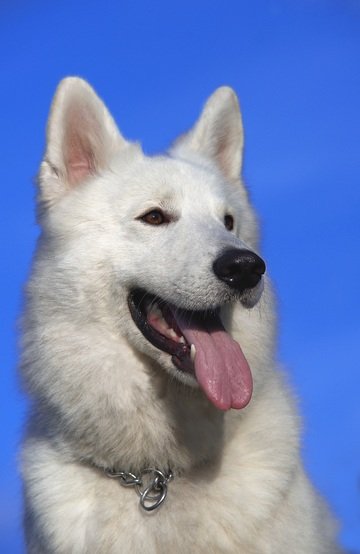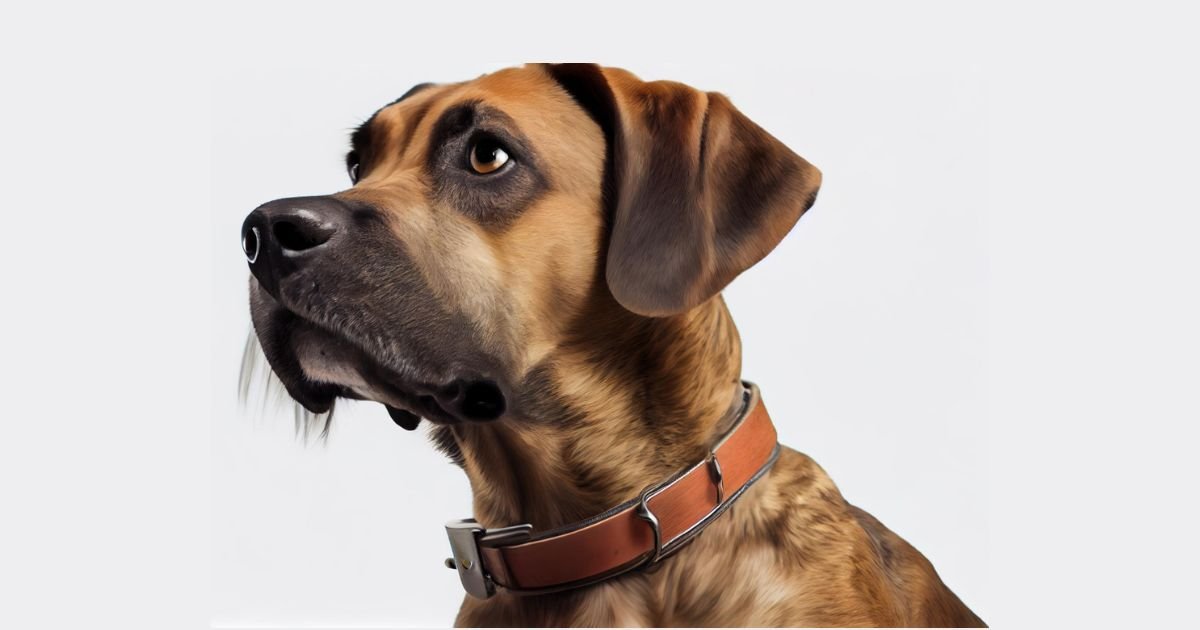Collar marks on dogs are common but have you ever wondered how to get rid of collar marks on dogs? Overlooking the issue can cause discomfort and even health problems for our furry friends.
These marks are typically characterized by redness, chafing, or hair loss around the neck where the collar sits. They can result from various factors, including collars that are too tight, made from non-breathable materials, or not cleaned regularly.
Addressing collar marks is crucial for several reasons. Firstly, it ensures the comfort of the dog. A collar that leaves marks can irritate, leading to scratching, licking, and potential skin infections.
Secondly, collar marks can affect the dog’s appearance, making them look unkempt and potentially leading to more severe skin issues.
Lastly, taking care of this problem reflects responsible pet ownership and shows a commitment to the well-being of our canine companions.
By understanding the causes and implementing preventive measures, we can protect our dogs from the discomfort and potential health risks associated with collar marks.
This article will guide you through the steps to eliminate collar marks, ensuring your dog remains happy, healthy, and looking its best.
Understanding Collar Marks
Collar marks on dogs are more than just unsightly; they can be indicative of underlying issues that need to be addressed for the health and comfort of your pet.
These marks are typically characterized by areas of irritation, discoloration, or hair loss on the dog’s neck where the collar is worn.
Understanding what collar marks are and their causes is the first step toward preventing and treating them effectively.
Collar marks are visible signs of irritation or damage to a dog’s neck caused by their collar.
These can appear as red, itchy, and inflamed areas of skin, sometimes accompanied by hair loss or changes in skin pigmentation.
While collar marks themselves are not a disease, they are a symptom of discomfort that should not be ignored.
Causes of Collar Marks
Several factors can contribute to the development of collar marks on dogs:
- Tight Collars:
A collar that is too tight can restrict a dog’s movement and cut into their skin, causing chafing and pressure sores.
It’s essential to ensure that a dog’s collar fits properly, allowing two fingers to fit comfortably between the collar and the dog’s neck.
- Allergic Reactions:
Dogs can have allergic reactions to the materials used in their collars, such as nylon, leather, or metal.
These allergies can manifest as dermatitis, leading to collar marks. If an allergy is suspected, it’s crucial to identify the allergen and switch to a hypoallergenic collar.
- Lack of Collar Hygiene:
Just like any other wearable item, a collar can accumulate dirt, oils, and bacteria over time. Without regular cleaning, this buildup can irritate a dog’s skin and lead to collar marks.
Maintaining collar hygiene is vital for preventing these marks and ensuring the overall well-being of your pet.

How to Get Rid of Collar Marks?
Preventing collar marks is essential for the health and comfort of your dog. By taking proactive steps, you can ensure that your dog’s neck remains free from irritation and discomfort.
Here’s how you can prevent collar marks through proper collar selection, maintenance, and exploring alternatives.
Choosing the Right Collar Size and Material
Selecting the right collar size and material is crucial for your dog’s comfort.
A collar that is too tight can cause chafing and pressure sores, while one that is too loose may not be secure. Measure your dog’s neck and consult a size chart to find the perfect fit.
Leather collars are durable and comfortable but require more care, while nylon collars are lightweight and easy to clean.
Consider your dog’s size, breed, and skin sensitivity when choosing a collar.
Importance of Regular Collar Cleaning
Collars can accumulate dirt, oils, and bacteria, leading to skin irritation and collar marks. Regular cleaning of your dog’s collar is as important as bathing your dog.
It helps in odor control, maintains the collar’s durability, and ensures the safety and comfort of your pet.
Clean the collar with a mild soap or dog shampoo and dry it thoroughly to prevent any moisture-related issues.
Alternatives to Traditional Collars
If traditional collars are causing issues, consider alternatives like harnesses, which distribute pressure more evenly across the body.
Inflatable collars and soft e-collars are also available, providing comfort without compromising on safety. These alternatives can be particularly useful for dogs with sensitive skin or those prone to collar marks.
By choosing the right collar, maintaining cleanliness, and considering alternatives, you can prevent collar marks and ensure your dog’s well-being.
Immediate Steps to Treat Collar Marks
When your dog develops collar marks, it’s important to act quickly to alleviate their discomfort and prevent any potential skin infections.
Here are the immediate steps you can take to treat collar marks on your dog:
Removing the Collar to Let the Skin Breathe
The first step in treating collar marks is to remove the collar to allow the affected skin to breathe.
This will relieve pressure on the area and reduce the risk of further irritation.
It’s essential to give your dog’s neck a break from the collar, especially if the marks are due to tightness or an allergic reaction.
Cleaning the Affected Area
Once the collar is off, gently clean the area with a mild pet-friendly soap or shampoo.
This will help remove any dirt, debris, or bacteria that may have accumulated under the collar and could contribute to skin irritation.
Be sure to rinse thoroughly and pat the area dry with a clean towel to ensure no soap residue is left behind.
Applying Pet-Safe Ointments or Creams
After cleaning, apply a pet-safe ointment or cream to the affected area. These topical treatments can provide a soothing effect and aid in the healing process.
Look for products specifically designed for dogs, as some human medications may be harmful to pets.
Always follow the instructions provided by the product or your veterinarian.
By following these steps, you can help your dog recover from collar marks and ensure their skin remains healthy and irritation-free.
Long-Term Solutions for Collar Marks*
For pet owners, addressing the immediate discomfort of collar marks is just the first step. Ensuring these marks don’t reappear requires a long-term strategy that focuses on the health of your dog’s skin and fur.
Here are some enduring solutions that can help prevent collar marks from becoming a recurring issue.
Letting the Fur Grow Out
Allowing your dog’s fur to grow out can be an effective way to eliminate collar marks.
As the hair grows, it provides a natural barrier between the collar and the skin, which can help prevent friction and subsequent marking.
During this period, it’s important to keep the growing fur clean and well-groomed to avoid matting, which could exacerbate skin irritation.
Using Specialized Anti-Collar Mark Products
There are various products on the market designed to protect your dog’s neck from collar marks.
These include creams, ointments, and sprays that create a barrier on the skin, reducing friction and promoting healing of any existing marks.
Look for products with natural ingredients that are safe for pets and consult with your veterinarian for recommendations tailored to your dog’s specific needs.
Considering a Humidifier to Maintain Skin Moisture
Maintaining the right humidity level in your home can have a significant impact on your dog’s skin health.
Dry air can lead to dry, itchy skin, which is more susceptible to collar marks. Using a humidifier can help keep the air—and your dog’s skin—properly moisturized.
It’s important to choose a humidifier that’s safe for pets and to maintain humidity levels between 30%-50% for optimal comfort and health.
Implementing these long-term solutions can help ensure that your dog’s neck remains free from collar marks, contributing to their overall comfort and well-being.

Special Considerations for White Fur
White fur can present unique challenges when it comes to collar stains. The visibility of discoloration on white fur is higher, and such stains can be particularly stubborn.
Here’s how to deal with collar stains on white fur and keep your dog looking pristine.
Dealing with Collar Stains on White Fur
Collar stains on white fur can be caused by a variety of factors, including the material of the collar and the dog’s body oils.
Metal collars, especially those that are not stainless steel, can leave gray or rust-colored stains.
To prevent these, it’s advisable to use collars made of non-staining materials like stainless steel, silicone, or fabric.
Recommended Cleaning Agents and Techniques
For existing stains, a gentle approach is necessary to avoid damaging the delicate white fur. A solution of white vinegar, water, and dish soap can be used to soak the affected area, followed by gentle scrubbing with a soft brush.
Hydrogen peroxide can be applied to help lift the stain, but it should be used with caution as it can bleach the fur if not diluted properly.
For tough stains, a paste made from cornstarch and 3% hydrogen peroxide can be applied with a toothbrush, left to sit for 15 minutes, then brushed out and rinsed with warm water.
By using these methods, you can effectively remove collar stains from your dog’s white fur and maintain their immaculate appearance.
Final Thoughts
As responsible pet owners, we must ensure that our dogs are comfortable and healthy. By following the guidelines provided, you can prevent collar marks and treat them effectively if they occur. Remember, the key to a happy dog is not just a well-fitting collar but also the love and care you provide every day.
With the right approach, you can keep your dog’s neck free from irritation and your furry friend in great spirits.

